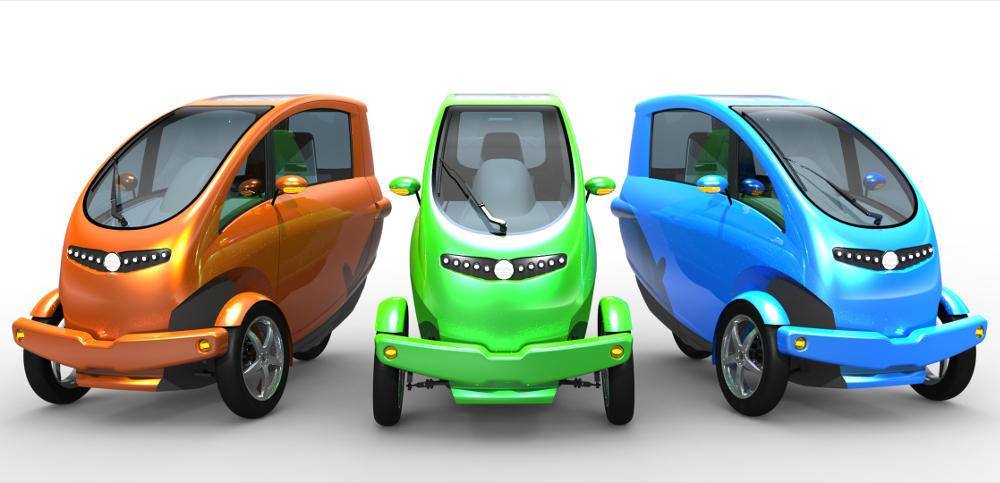
The VeloMetro Veemo is a new take on the velocars of old; pedal-powered vehicles that proved a popular way of getting about towns and cities in France during the 1930s and 40s. So efficient were these lightweight machines, that they broke cycling speed records before being promptly declared ineligible to race by cycling’s governing body.

The sporting world’s loss looks to be our gain; VeloMetro has updated the concept of velocars with the latest technology and engineering: human powered, protected from the weather, networked, and assisted by electric and solar power.
With petrol prices hovering around £1 per litre, it’s easy to forget that our appetite for fossil fuels is unsustainable. But what if fuel became unaffordable for most? What if we valued clean air, safe streets, health and vitality above effortless personal mobility? The roads would remain, of course, but instead of cars, most of us would turn to bicycles and human-powered vehicles such as the Veemo.

Share, don’t buy
The Veemo is described as a ‘non-car personal transportation alternative’. The scheme overcomes the high-purchase price of other modern-day velocars – known as human-powered vehicles (HPVs) – by operating a low-cost car share model. Users will sign up online and ride within a few minutes using their smartphone.
The vehicle is classified as a bicycle, so is available to the 50 per cent of young adults under 25 who don’t have a driver’s licence.

In the same vein as the Veemo, The Zeppelin is a human electric hybrid vehicle. It is powered by two riders aided by a 750w electric rear motor and cruises at 25 mph on flat ground. Built from aluminium and polycarbonate it weighs just 122kg and has a 30 km electric range. In America, the Zeppelin meets the legal definition of a bicycle in many states, making it street legal with no license, registration, or insurance required.

Light and airy – the view from the Zeppelin cabin
The Future Cycles project was born from a realisation that current transport infrastructure would outlive the petrol-powered vehicles that currently use it; begging the question: “What transportation alternatives could replace these vehicles that would deal with shifting energy availability and still provide the kind of independent travel that our infrastructure requires?”
Any alternative would need to be much lighter in weight, highly efficient, use only local sustainable energy, and be inexpensive to own and maintain. The Zeppelin trike combines weather protection and carrying capacity of a car with the efficiency of a bike. The goal was to create a car-like experience in a vehicle that is human powered and legally defined as a bicycle.
Through the design, fabrication, and demonstration of these vehicles, The Future People hope to challenge us to consider the use of human energy and the resource of time as alternative options to fossil fuels.
What is a safe car?
Most people would not consider using a vehicles like the Veemo or Zeppelin on the roads because of fears over safety, but what constitutes a ‘safe’ car? There is a perception that large, heavy cars such as 4X4s are safe, but any added protection they offer their occupants is very much at the expense of any other road user with which they collide. Human-powered vehicles are designed to operate in urban areas at low speeds. This makes them less of a risk to pedestrians and less damaging to the road surface. Furthermore, they are economical and near-silent. If the 20mph limits in urban areas were respected, HPV vehicles such as the Zeppelin or Veemo would come into their own.
ETA: Ethical breakdown cover
Established over 25 years ago, and with over 5,000 recovery trucks on call 24/7, the ETA has a proven track record of providing efficient, reliable breakdown cover. We handpick only the best local mechanics and garages around Britain to send out if you break down. We believe this way of working is efficient, environmentally friendly and helps support local communities and economies, too. It’s one of the reasons we have been rated as ethical.
James Clark
Nice idea but how easy are they peddle against the wind and how stable are they in a strong crosswind. They have a large surface area. We people who live in areas where trees grow leaning sideways would like to know.